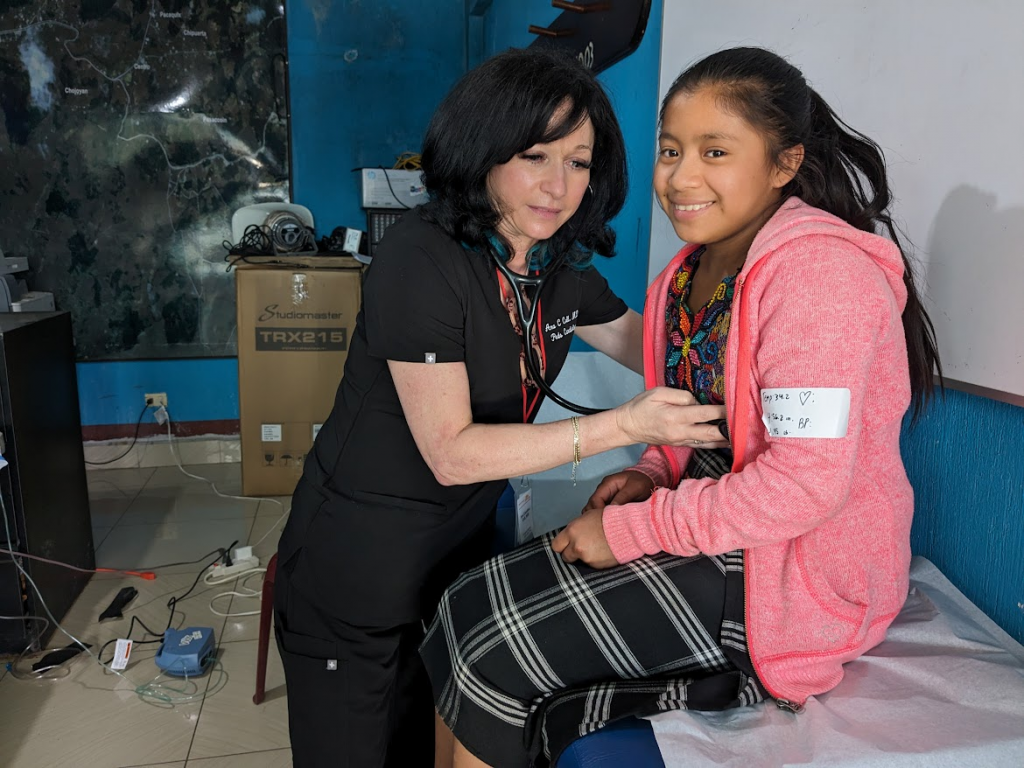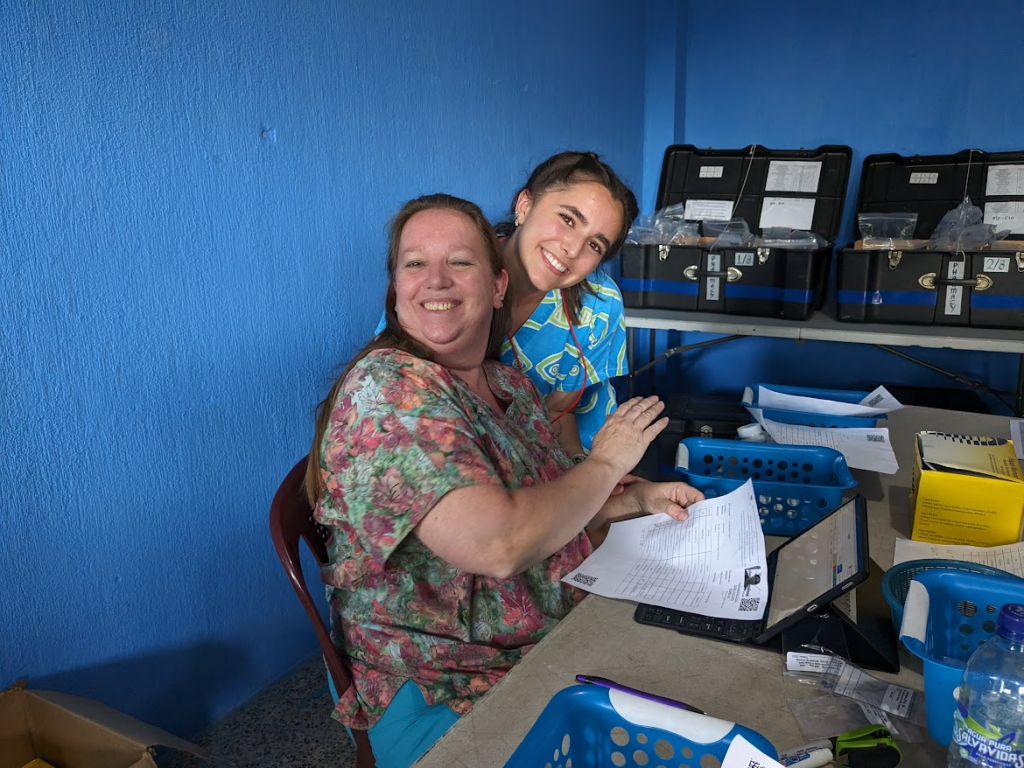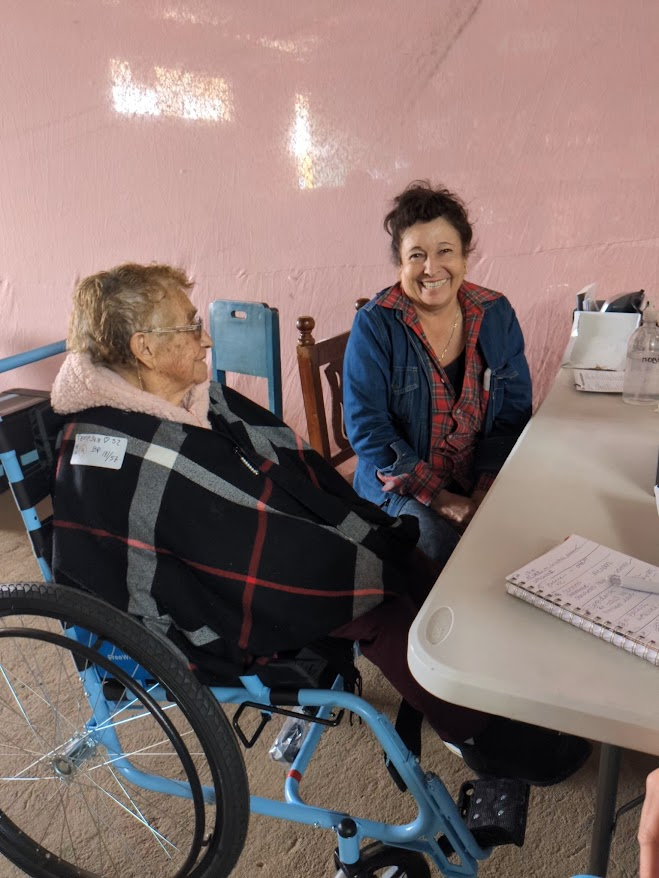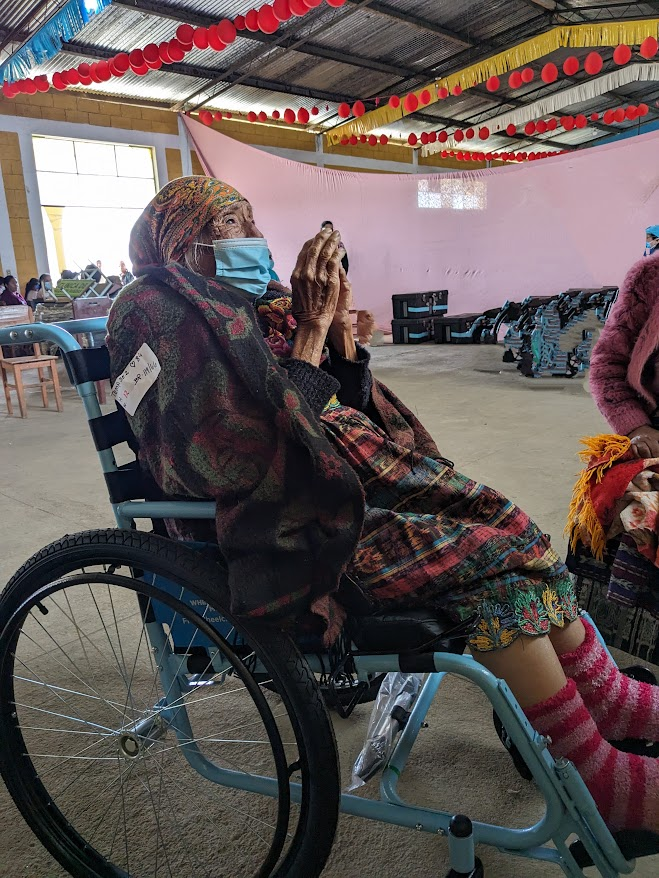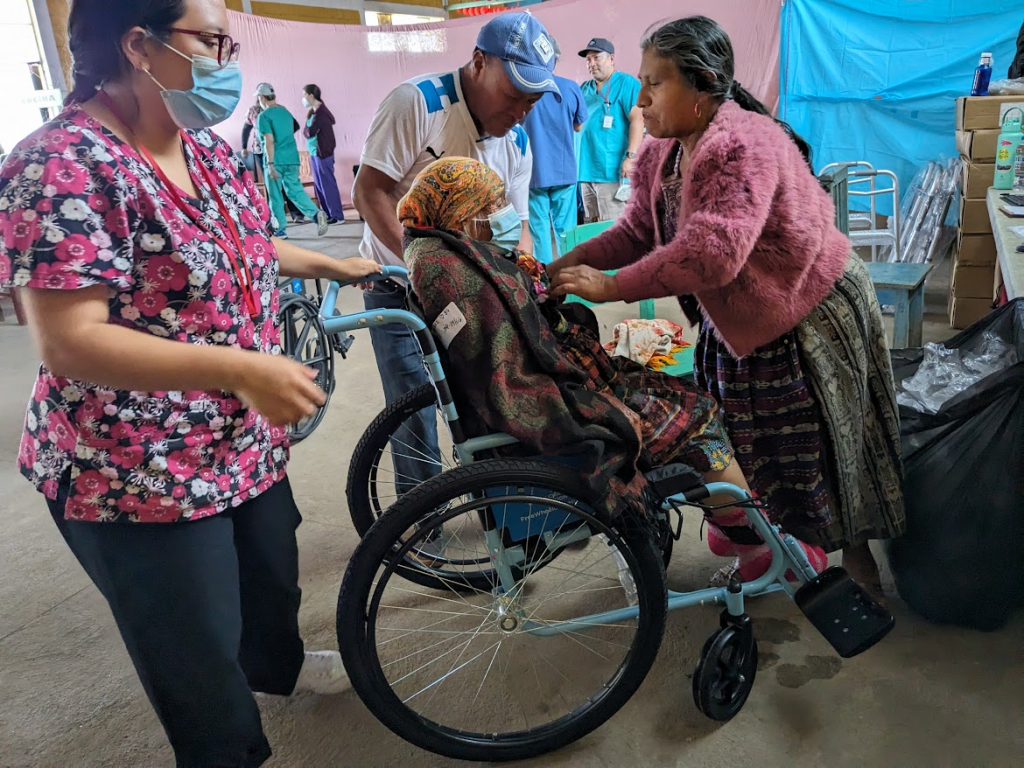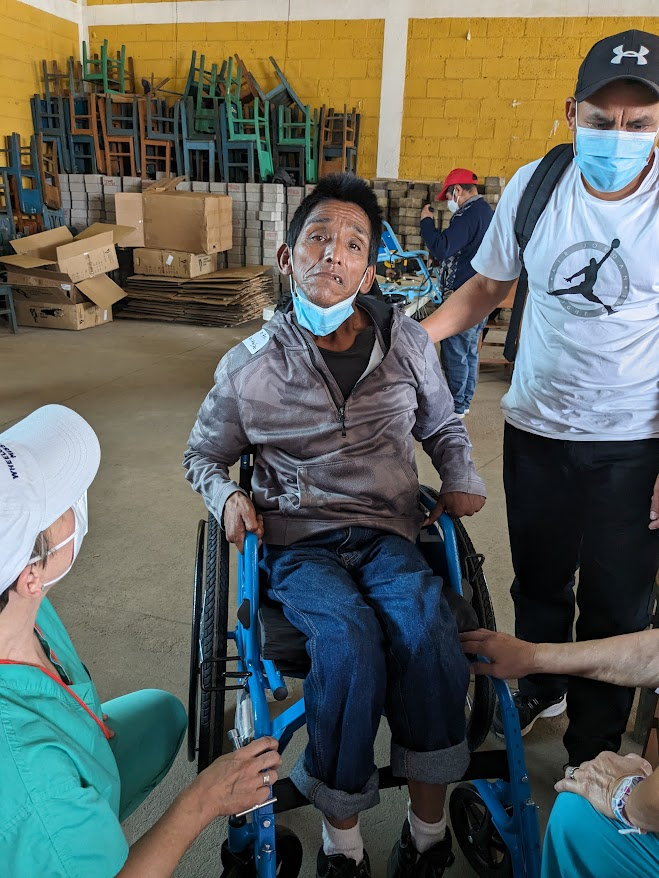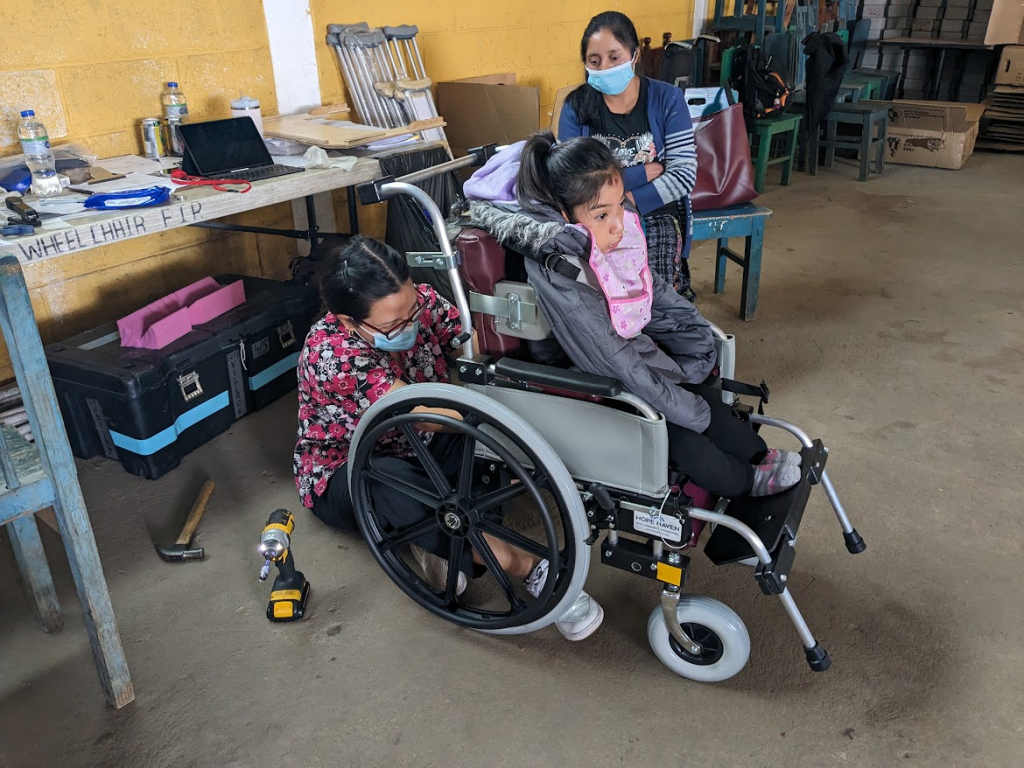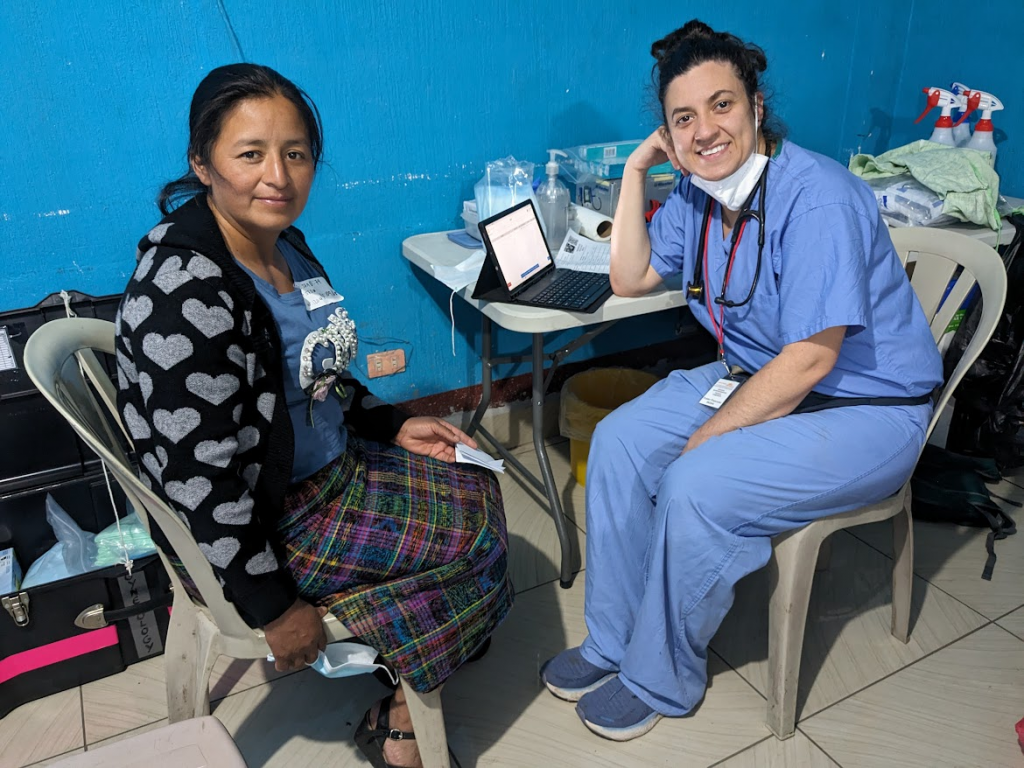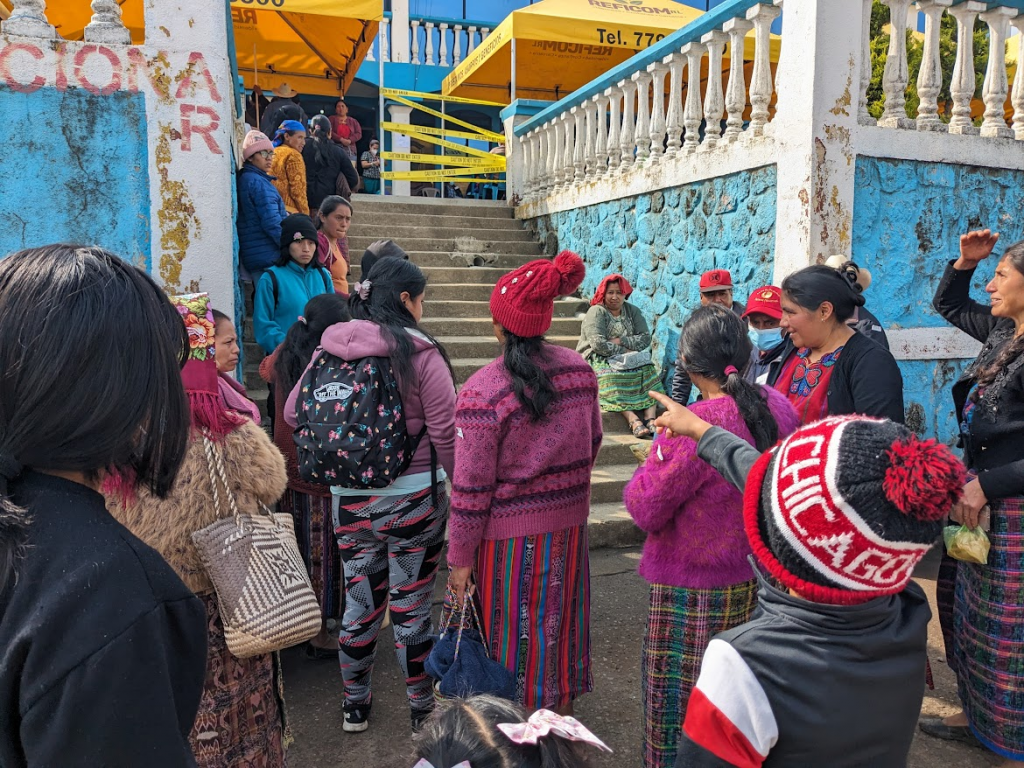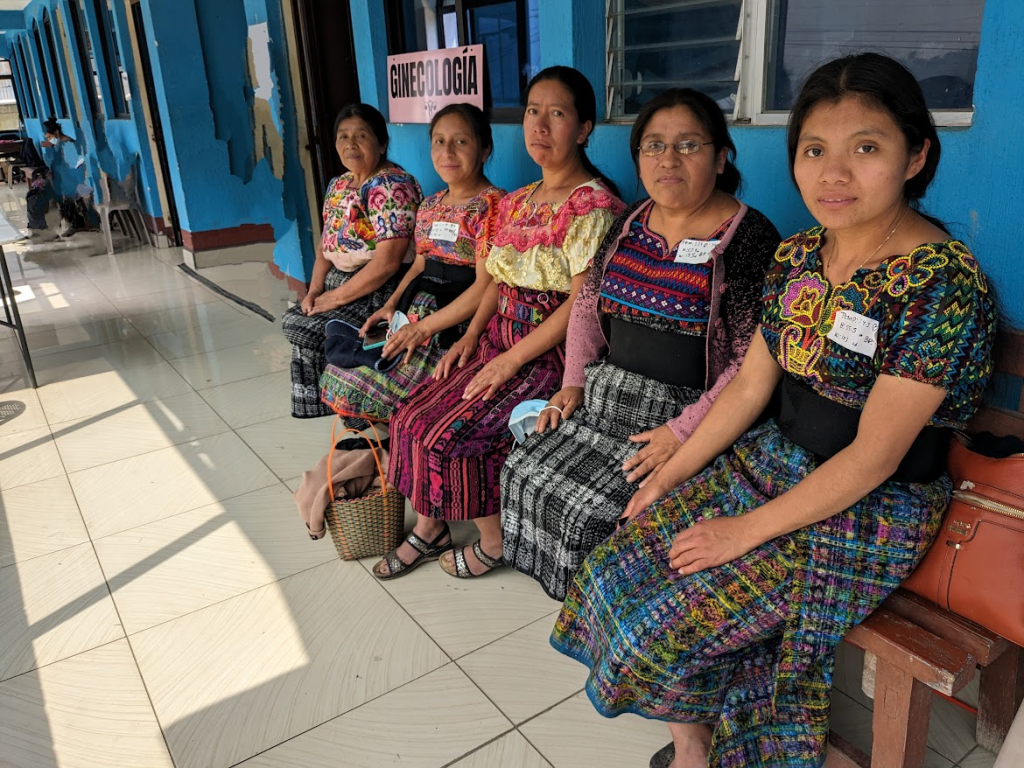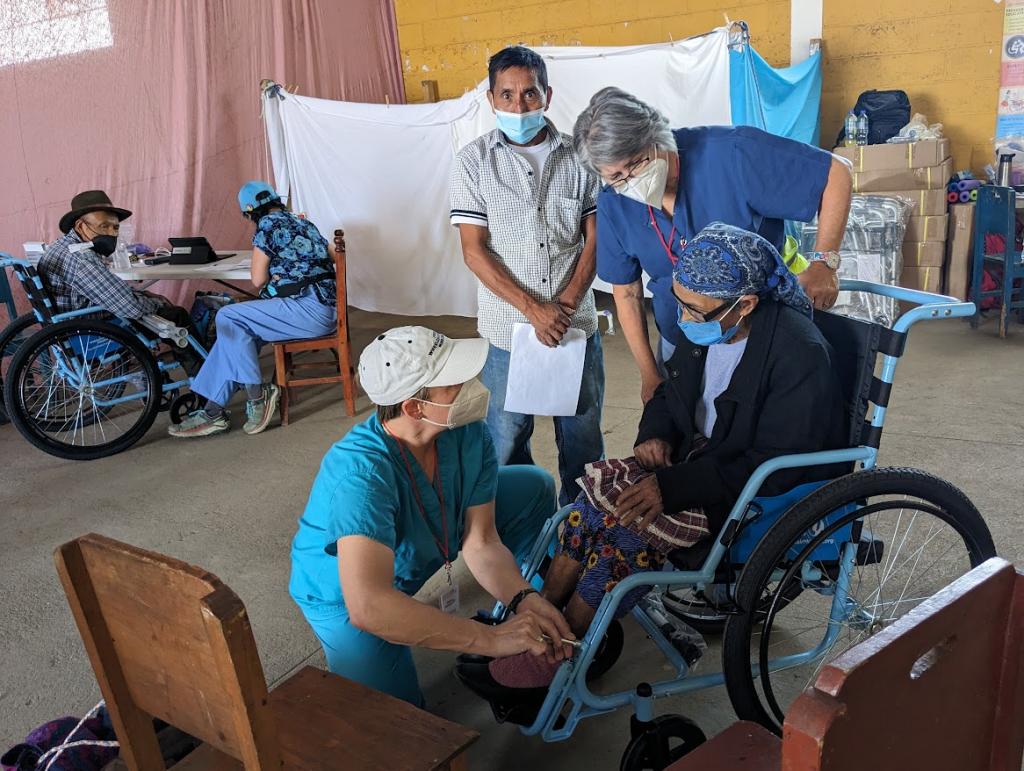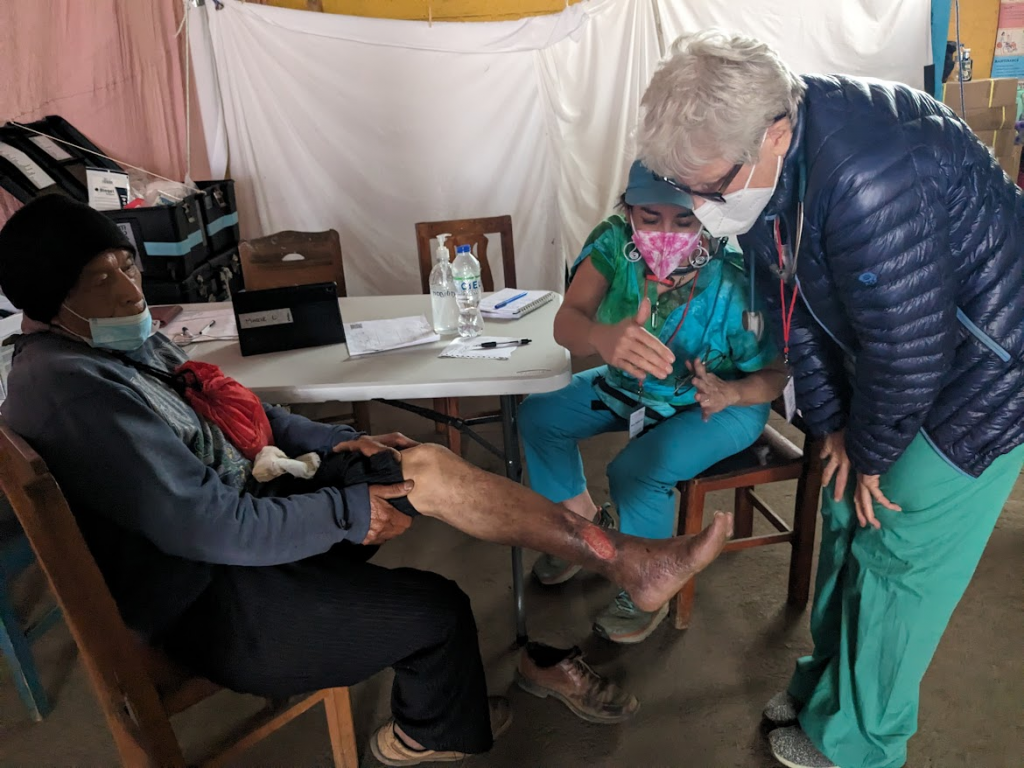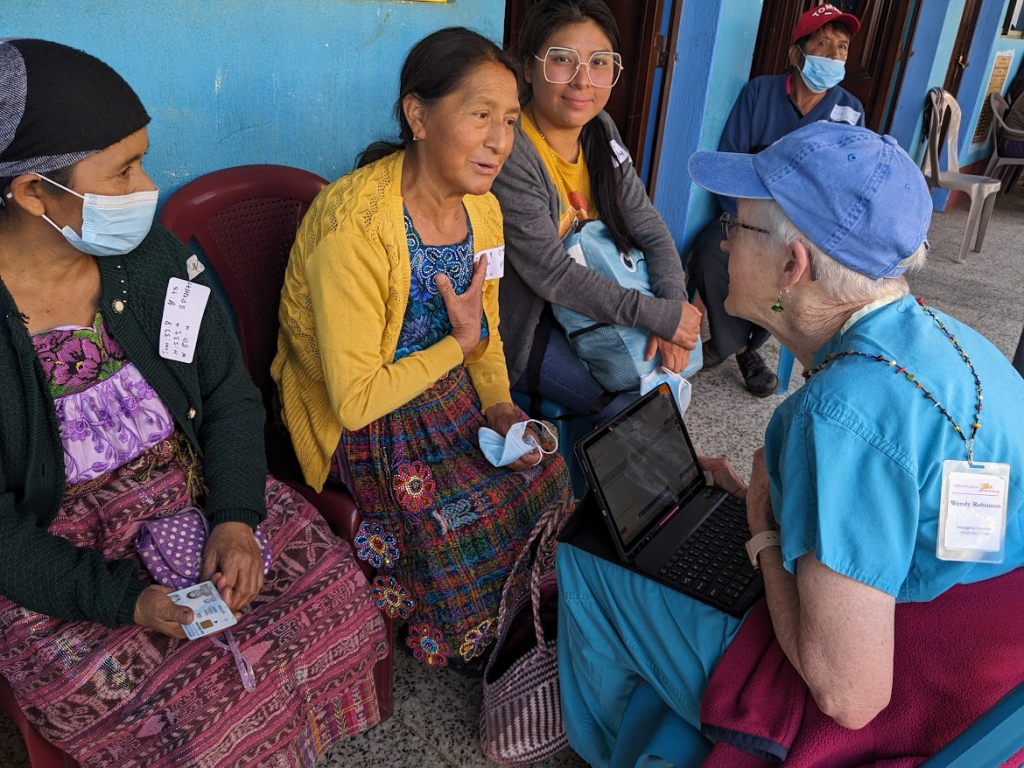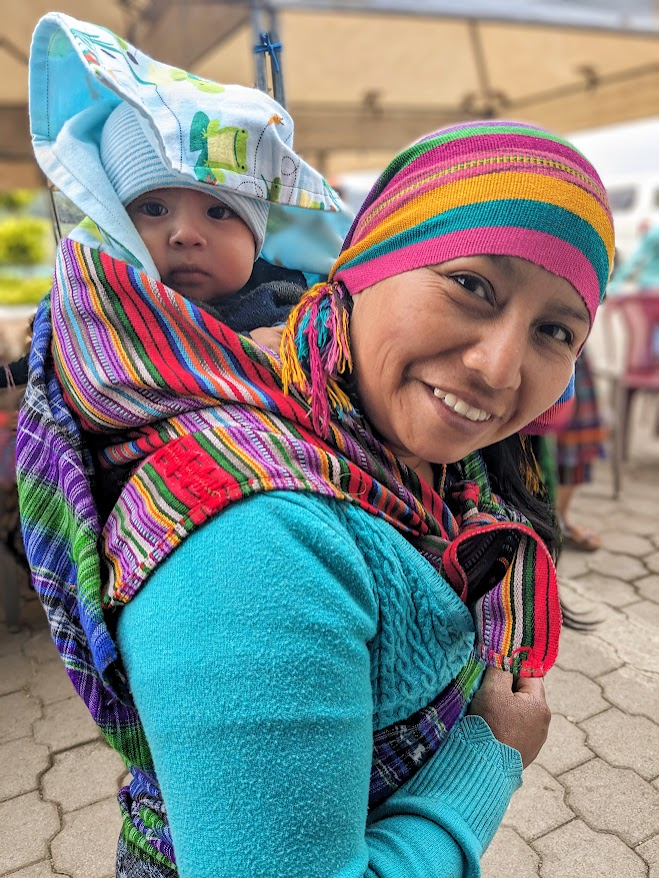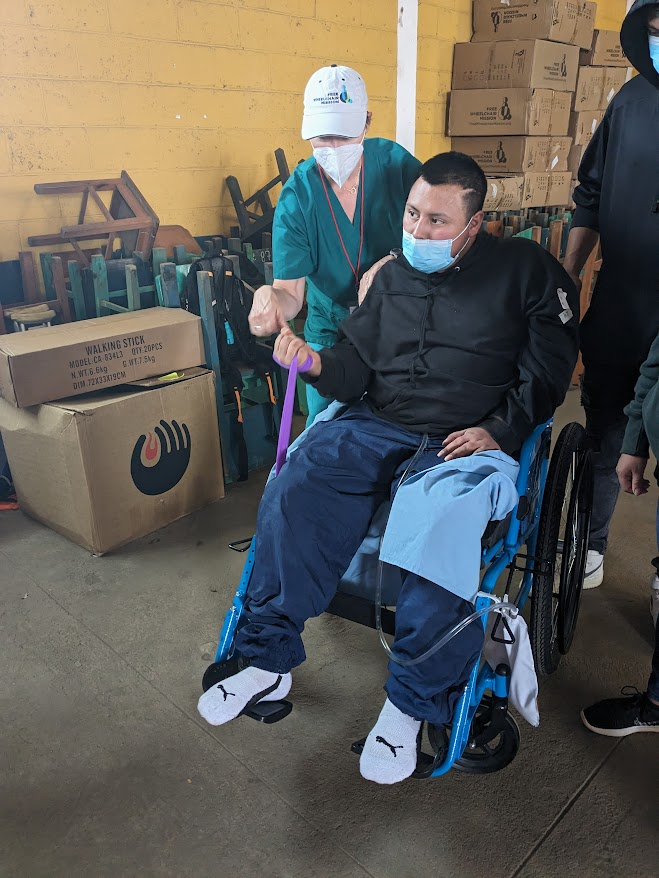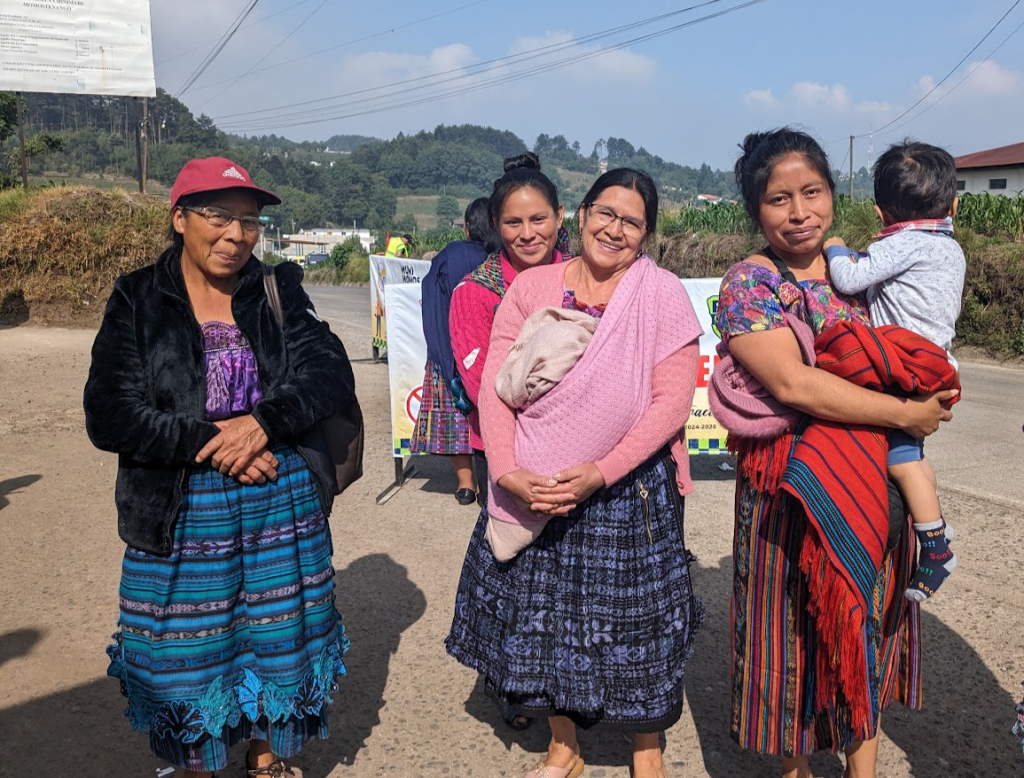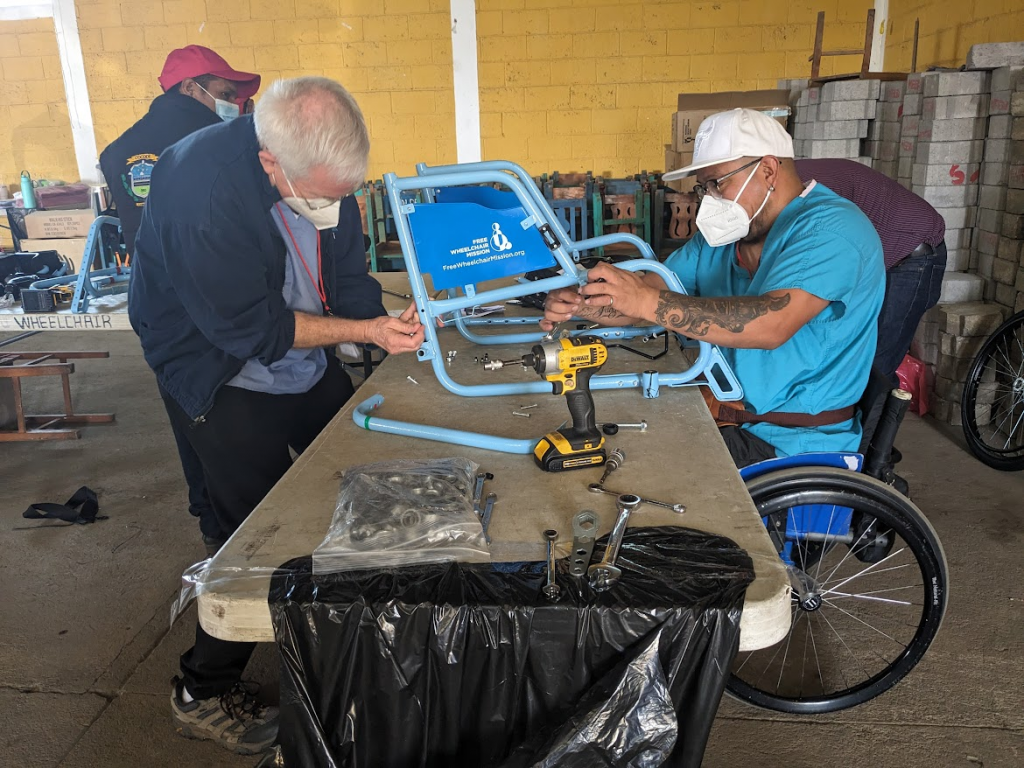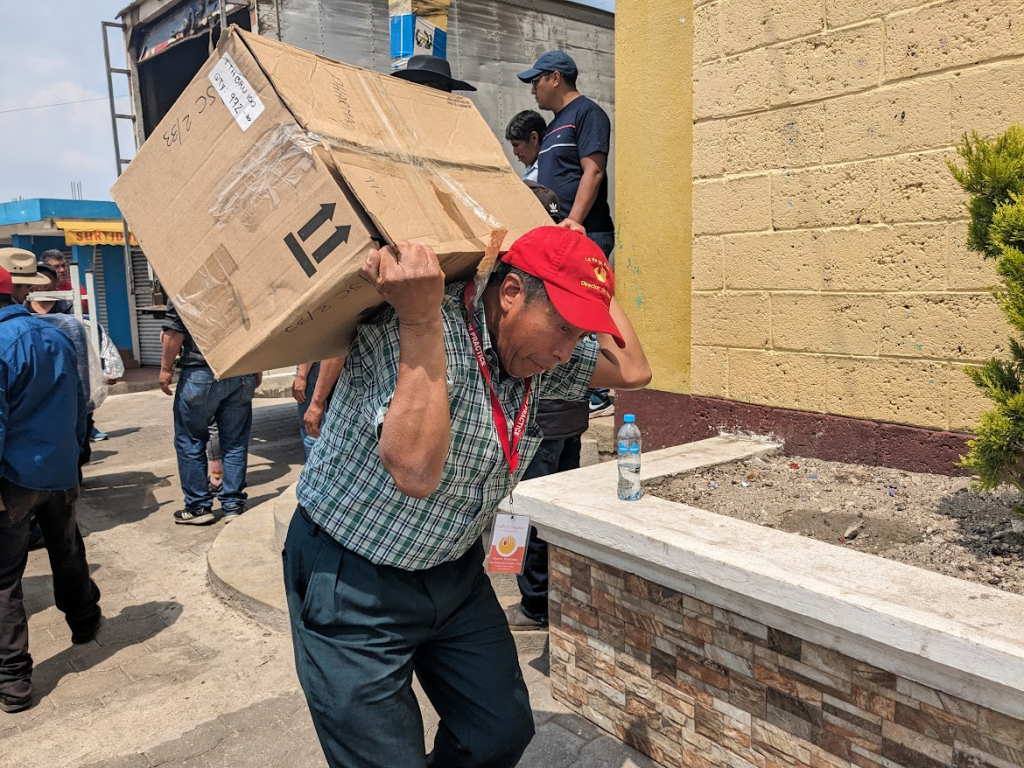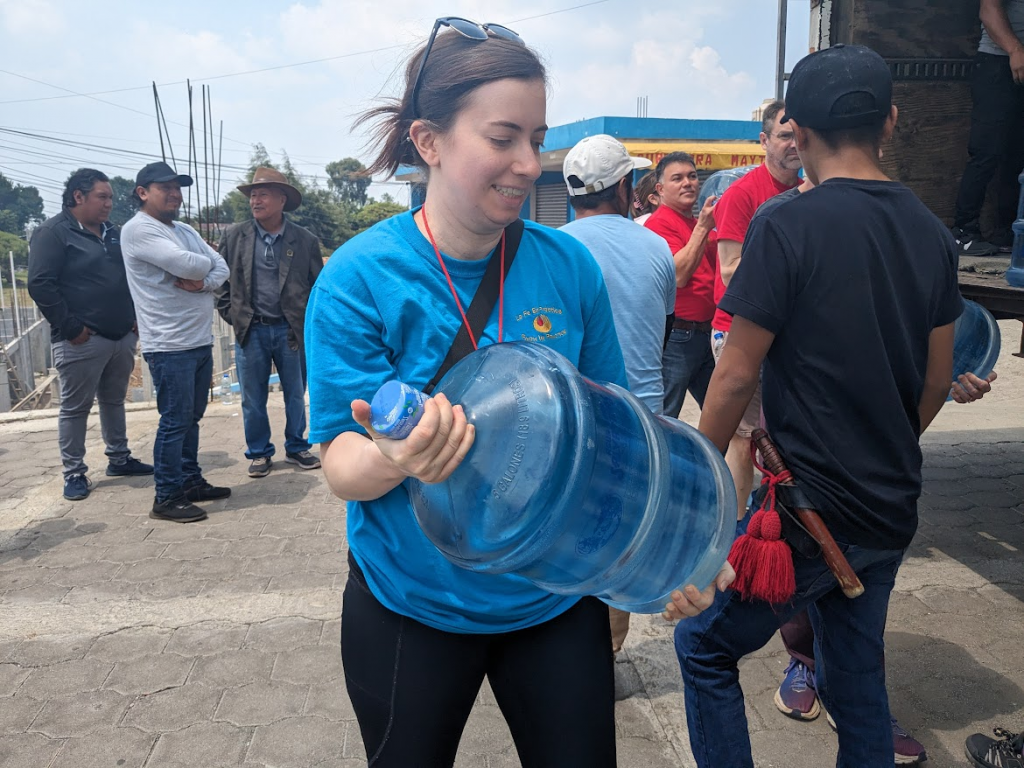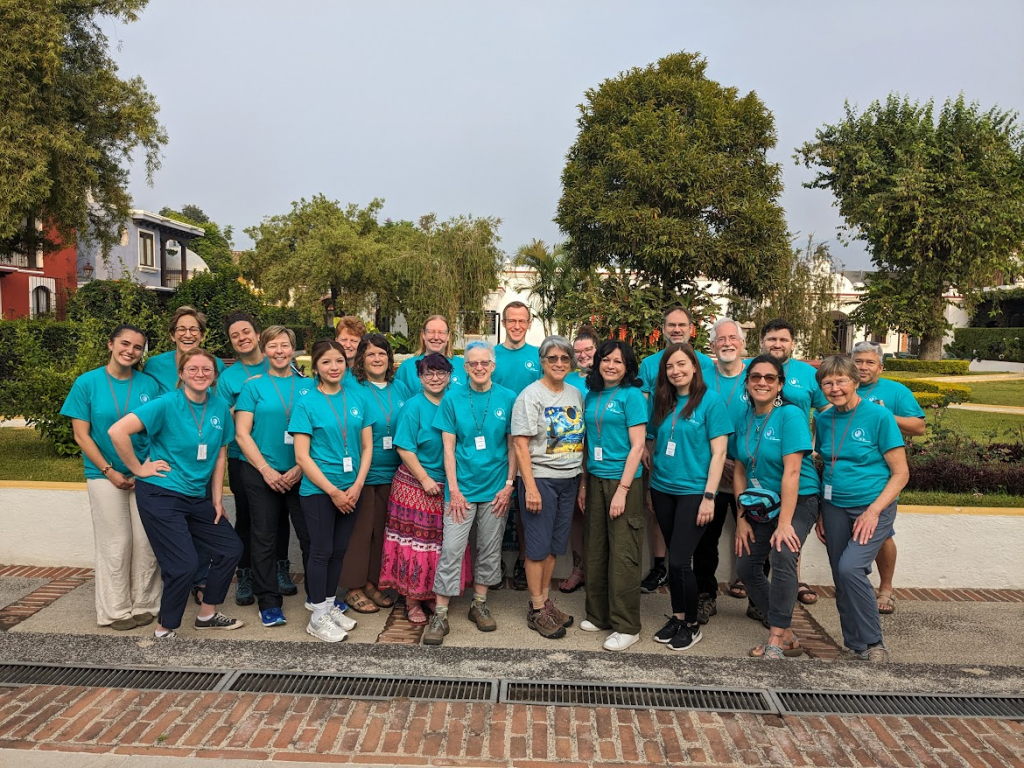Arrival in Guatemala City . . . Wonderful reunions and easy smiles. Hugs and stories of past patients. Almost all of this particular team have volunteered with FIP before and some almost since the beginning of FIP. But this year is MY first year so this blog will inevitably reflect my wide eyes as our incredible American medical community cares for these gracious appreciation of these warm and gracious people who have little other access to quality medical care.
Guatemala itself did not disappoint in its welcome. Our first night in Antigua, fireworks extended far into the wee hours, apparently celebrating the final night of the Easter season. The fireworks stopped, and there was a 6.4 volcanic explosion that woke up all but the heaviest sleepers. Not every group is treated to an earthquake.
25-year veteran volunteer Wendy Robinson recounted her prior week with an FIP surgical team. She was excited over the many successful surgeries as well as the addition of some young surgeons to the team. Hoorah! As long-term FIP volunteers mature, these new team members are critical. Know any young-ish medical professionals?
Setting up the clinic. . . This was a long day of travel to Quetzaltenango, a remote village of just over 3000 residents with limited access to medicine. With no hotels in the area, the team needs to make this trip every day of the Clinic. This is the first year for an FIP Clinic here. Over thirty Red Hats (local volunteers) joined with FIP American volunteers to unload a massive truck stocked from a FIP warehouse with supplies for the week. Transforming an empty government building into a medical clinic is no small feat.
Particular challenges for this clinic included communicating with patients who speak indigenous languages rather than Spanish as well as transitioning to electronic record-keeping. For some patients, this may be the first professional care they have ever received so that always requires special attention.
The Clinic… The first day of Clinic saw long lines of patients—and no electricity. Arrggghhh! Record-keeping still happened somehow; but no lights. This was more than a little inconvenient for some specialties. For instance, without electricity, intimate exams of patients in an environment that safeguards their privacy just don’t work. Headlamps (which were tried) only go so far.
But care went on even without electricity, and the week progressed. So many patient stories over the four days of Clinic. . .
Three-year-old Enrique suffers from an inguinal hernia. Hard to play and do other normal 3-year-old activities when you are in pain! His sister, now a healthy 8-year-old, also suffered from this problem, which often runs in families. An FIP surgical team will take care of Enrique, as they did some years ago for his sister.
FIP Clinicians periodically direct patients to other local resources. Physicians help point them to FIP Surgical Weeks, or to hospitals at Obras, or Milavio at Retalhulee. FIP often pays transport and any fees involved. Additionally local community volunteers escort these patients so they have support throughout their medical treatment.
Mobility Clinic
This was a big part of this Clinic. This rural area is ill-suited to people with mobility issues. Family members, often mothers, wind up carrying their loved ones everywhere on their backs.
Individually fitted wheelchairs provide improved comfort, mobility, and independence as well as reduced complications such as pressure sores AND they provide enormous relief for family members who have been carrying their loved ones about.
60-year-old Rudolfo has spinal cord damage. He and his family have worked exceptionally hard to maintain his functionality. His family built him parallel bars, where he walks about an hour every day! FIP is providing him a wheelchair to provide additional help.
Jonathan is a 28-year-old man paralyzed in one arm and from the waist down two years ago in an auto accident. His sister and two of his four brothers brought him to Clinic today. The paralysis is permanent. Physical Therapy staff fitted him with a proper wheelchair and taught him exercises to improve the strength he has in one arm. His family appeared highly committed to his care.
A daughter brought 53-year-old Ambrosia to Clinic. Ambrosia has gradually lost most use of her legs and much use of her arms following a cervical surgery many years ago. Like many women, Ambrosia and her daughter wore Huipil, beautiful embroidered blouses common in this area. The physical therapist fitted Ambrosia with a wheelchair and encouraged her to use the footrests. These simple measures should improve the quality of her life.
Josefa (age 67) carried on her back her 85-year-old mother, Desideria, to Clinic. Desideria was also treated for other problems. Many patients seen in Mobility Clinic receive care in other departments as well. [photos] A properly fitted wheelchair will improve life for both mother and daughter.
But at 85, Desideria was only the second oldest patient seen that day. Lesbia, 95, came to Clinic shortly after Desideria. A new wheelchair is also a big assist for this family.
68-year-old Roberto was in an accident some years ago, and had successful skin grafts. More recently, he hit his leg with a machete, damaging the skin graft. He will be referred for surgery.
Near the youngest end of patients at Mobility Clinic was Astrid, a small 12- year-old. She needs help in most activities of daily living. Her new wheelchair will provide additional comfort and support for Astrid and a huge help for her mother.
Mobility Clinic was just one part of this week, of course—it was the most visual, the easiest for me to see the care provided. Another extremely important service was in the Gynecology Clinic, where two Nurse Practitioners provided pelvic exams for many women, identifying, and IMMEDIATELY TREATING the two women they saw who had signs of cervical cancer. These are two lives saved because of FIP.
Surprisingly (for me, anyway) was the large number of people with diabetes. These people do not fit the image of the overweight diabetic patient. They are mostly thin. But of course, diabetes reflects diet, and in this poor area of Guatemala, people eat what is available, which is often heavy on carbs, light on fruits and vegetables. Patients showing any signs of diabetes were provided with education, where they learned about eating habits to help control diabetes. This kind of eating was totally new to most people.
Days at the Clinic were longer than planned: we were short-staffed particularly on physicians this year, but no one left until every patient had been seen and had received the care identified.
A shout-out is needed for the Red Hats. These are mostly men, but SOME WOMEN (in this male-centered culture) who have been identified as community leaders. Prior to the Clinic, they helped identify people who would benefit from the Clinic in the tiny surrounding communities (remember that the “Big City” we were operating in has 3000 residents). The Red Hats helped assign people days to come and in some cases facilitated transportation. They also came every day to help register people, escort them to their various assigned clinics, and perform other invaluable jobs. A particularly fun memory I have is of a bus, organized by a Red Hat, of patients and their support people heading home at the end of the day. On top of the bus are many new wheel chairs, all fitted and labeled and protected with plastic. The chairs were on their way home, too.
Here are some statistics about our four-day Clinic:
Total patients 888
GEN 570
GYN 136
PED 167
MOB 104
IVAA 111
Referrals 252
Ultrasounds 228
33% male
67% female
-Lucy Himelreich



